Here is a great infographic explaining liver qi stagnation from our friends at Acupuncture Now Foundation:

Here is a great infographic explaining liver qi stagnation from our friends at Acupuncture Now Foundation:

Topics: Traditional Chinese Medicine
Posted by Arden Yingling on Mon, Jun 22, 2015 @ 12:01 PM

So you've decided to check out acupuncture? Awesome! Acupuncture is a wonderful way to treat many health conditions, from the common cold to chronic pain to insomnia (and so much more). How do you decide where to make that first appointment, though? In a city like Austin, we're fortunate to have many options for our healthcare, including acupuncture and Chinese medicine. Here are a few tips on finding an Austin acupuncture clinic that meets your needs:
1) Choose a licensed acupuncturist: While other professions sometimes incorporate acupuncture into their practices, receiving treatment from a licensed acupuncturist is the best choice for accurate diagnosis and safe, effective treatment. Licensed acupuncturists in Texas possess master's degrees and have completed nearly 3,000 hours of education, including coursework in Western medicine and supervised clinical hours. They must also pass four national board exams before receiving licensure from the Texas Medical Board. The National Certification Commission for Acupuncture and Oriental Medicine, which handles national certification, is a good place to start looking for someone in your area.
2) Look for someone who works with you as a team: Depending on your diagnosis, your acupuncturist may ask you to consider lifestyle changes such as eating differently or exercising more. Incorporating such changes can be a key part of improving your health, so you want to do so in a way that's realistic. Don't hesitate to be honest about what feels possible for your life, and find a practitioner who listens to your concerns and works with you to develop an achievable plan.
3) Check out areas of specialization: All acupuncturists are trained to work with a wide variety of conditions. However, some choose to focus in certain areas. There are acupuncturists who work specifically with sports injuries, with pregnancy, with autoimmune conditions, and so on. If you'd like help healing a chronic or complex health issue, see if anyone in your area has a relevant specialty. Don't hesitate to call an acupuncture clinic and ask if they have experience working with your condition!
4) Financial policy: If affordability is a concern, you'll find lots of options. Many private practitioners are willing to work with those in financial need. If your health insurance covers acupuncture, some Austin practitioners accept insurance. Community acupuncture clinics offer lower-cost treatments in a group setting. And of course, schools such as AOMA have a student clinic, where you can receive affordable acupuncture from interns supervised by licensed professionals.
5) Make sure you like your acupuncturist: Here's the the most important part! Just as there are all kinds of people in the world, there all kinds of acupuncturists too. The most effective healing comes when you feel safe and supported, so follow your instincts and work with someone who listens with compassion and takes care to make you feel comfortable and relaxed while you're in their acupuncture clinic. Enjoy your treatments!
About the Author
Arden Yingling, LAc, is a graduate of AOMA Graduate School of Integrative Medicine. Her south Austin private practice, Songbird Acupuncture, focuses on wellness for mothers and children. She also works as a graduate teaching assistant at AOMA classes and clinics.
Topics: AOMA clinic, acupuncture clinics
Posted by Devan Oschmann on Fri, Jun 19, 2015 @ 10:00 AM
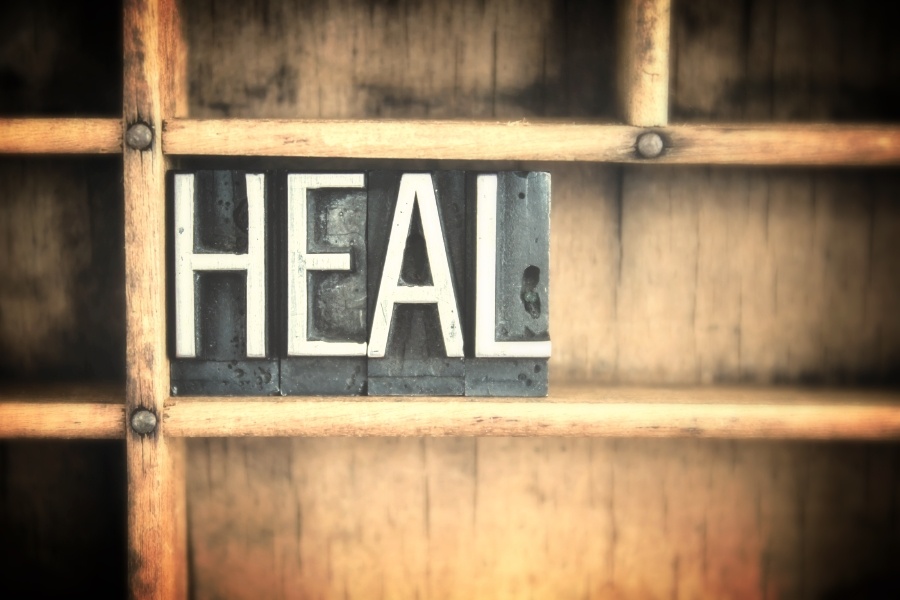
The term “holistic” seems like just another buzzword that is often used interchangeably with others like alternative, natural, complimentary, etc. But what does holistic really mean? And why is holistic healing so beneficial and important in this day and age?
The answer is simple. It’s because we are more than a physical body; we are sentient beings. Moreover, we are highly sentient beings living in diverse and complex social structures. Taking a holistic approach to healing means we will consider all realms of existence, not just the physical body. To many, this may sound like mind-body medicine, but that is only the foundation of holistic healing. As such, the benefits of holistic healing are conceivably vast. To condense the benefits and analyze them in correspondence to changes in physical, emotional, spiritual, and behavioral health, it becomes evident that there is only one all-encompassing benefit to holistic healing: a dramatically positive change in lifestyle.
Holistic healing aims to identify the root cause, or causes, of an imbalance (whether it is physical pain, stress, poor sleep, etc.). As a result, a patient feels completely considered and cared for, a benefit missing from many modern medicine practices. Instead of solely seeking to resolve symptoms, practitioners will ask the patient to both discuss and consider how not only their physical body relates to this imbalance, but also how their psychosocial, spiritual, and mental states contribute. And to help the body shift towards a healthier balance, a practitioner may guide the patient in processes such as emotional recognition and release, dietary modification, spiritual connection, and more. Not only will the patient be making improvements towards their original imbalance, but also in many realms of their life.
So now it is easy to understand the benefit of holistic healing. But why is its benefit so important? In modern societies, where people are often prone to feeling without purpose, place of belonging, and direction, a holistic perspective is far more than beneficial; it is essential. As sentient beings in an individualized and competitive society, we need to find spiritual and emotional connections in order to maintain our mental and physical health.
Fortunately, some of us are beginning to recognize this. Movements can be seen at many levels: within relationships, small communities, health and wellness establishments, and even major cities like Denver, Portland, San Francisco, and our very own Austin! These holistic lifestyles (which stem from a holistic healing perspective) may include, or go beyond, opportunities for the physical body to move within and experience nature, access to whole, locally sourced foods, and chances to participate in community events—being spiritual, religious, or cultural. In reflection, holistic healing isn’t just another module in the healing arts or a buzzword, it is an evolved and expanded concept of lifestyle that is helping humans to become human, once again.
Devan is an intern and student in the Masters program at AOMA. A Wisconsin native, she has a bachelor’s degree from the University of Wisconsin-Madison with focuses on pre-medicine and sociology. She is also active in the yoga and wellness community through teaching classes and privates, and writing for yoga subscriptions.
Topics: holistic healing, lifestyle
Posted by Jessica Johnson on Tue, Jun 16, 2015 @ 12:15 PM
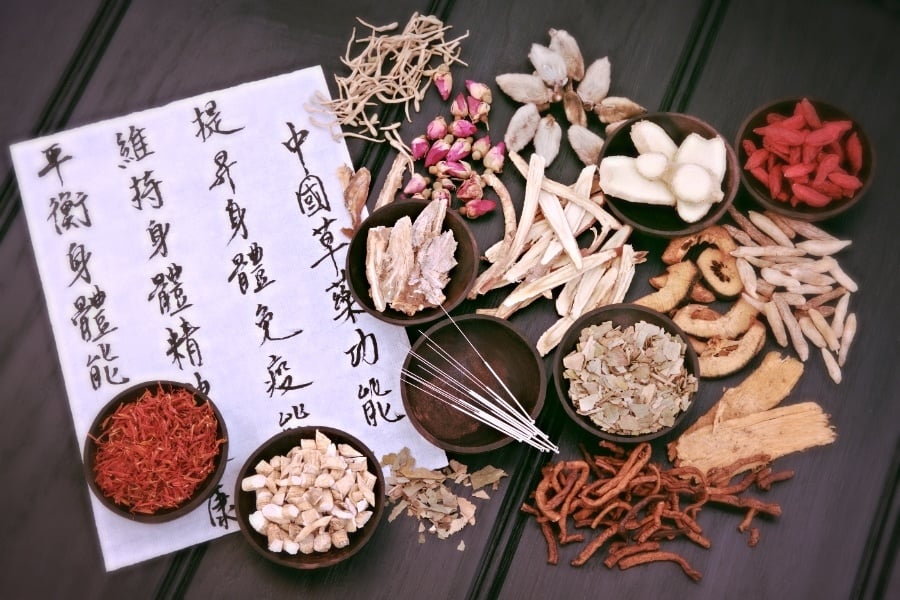
Before I started the master’s degree program at AOMA, I did not realize the degree to which herbal studies would be a major part of what I would learn in acupuncture school. It turns out that Chinese medicine is a vast field that encompasses much more than just the practice of acupuncture. In fact, herbs are an important facet of how we as acupuncturists help our patients get to a better state of health. They can be used in addition to acupuncture or as a stand alone treatment and they are an important staple of Chinese Medicine. So, in honor of being “in the know”, here are 5 things you may not have known about herbal studies here at AOMA!
Through AOMA's challenging graduate program I have been able to learn extensively about herbs and their uses, furthering my own practice in Chinese Medicine. Here at AOMA, graduate students complete over 500 hours of herbal education and take courses such as Herb Singles, Herbal Formulas, and Herbal Treatment of Disease. Though these courses can be difficult, they are also very valuable in an acupuncture practice. And no, I am not going to explain what “releasing the exterior” is. I will leave that for when you come to herb class!
Topics: herbal studies, chinese herbs, herbal program
Posted by Christina Korpik on Wed, Jun 10, 2015 @ 01:00 PM
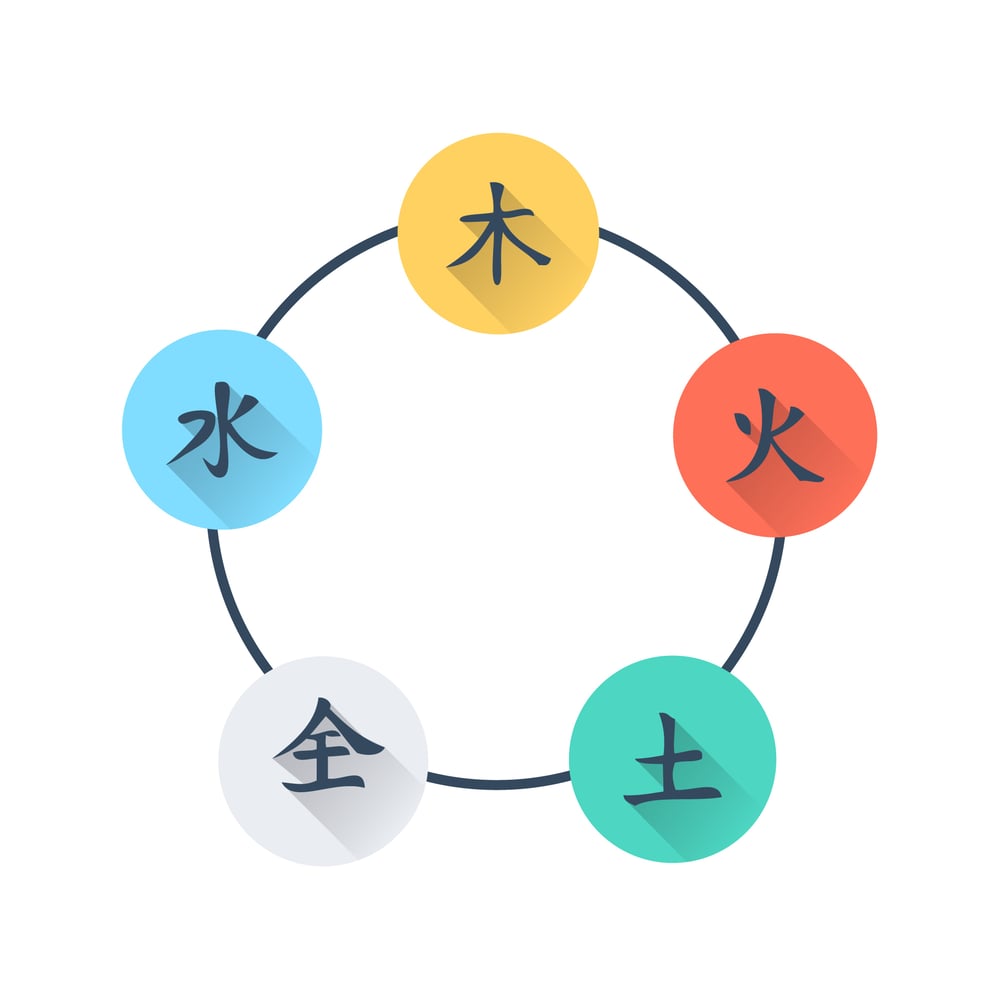
Making the decision to venture into acupuncture school is no small thing -- it requires a lot of trust, determination, drive, and commitment to your vision for your future as a thriving, professional practitioner. Many incoming students just beginning the journey of acupuncture school experience similar doubts or fears as they begin treading the new waters of the program, unsure of what life changes may lie ahead. Having been at AOMA for three and a half years now, I’ve talked to a good number of students pursuing their education at our Austin-based acupuncture school, each of them carrying a similar stream of worries and qualms about how to adapt themselves to the changing tides of their lives.
Having been down this road and observed the process of many others walking it alongside me, I have decided to offer some insider tips from the perspective of a senior preparing to graduate. Consider this a fun and simplified recipe for success, if you will, to help obliterate those pesky self-limiting beliefs and insecurities that commonly surface at the start of this acupuncture school adventure.
I know what it’s like to be overwhelmed as a “newbie” beginning to explore the new terrain of acupuncture school, so I’m here to remind you that the rewards of this path far outweigh the challenges, and that all you need is a little strategy via creative tools to help you navigate this program with ease, support and laughter.
I’ve also decided to incorporate one of the primary, foundational theories we learn about in Chinese Medicine -- Five Element Theory -- as themes for my tips in order to stimulate an integrated understanding of how to balance as you proceed toward the route. Chinese Medicine considers equilibrium of the five elements of Wood, Fire, Earth, Metal and Water to be a crucial aspect of health and vitality -- and this is in all realms of life, including our physical surroundings and activities as human beings. So, I’ve taken some of the basic associated energetic principles of each element and interwoven them into each of my five tips to ensure you a success recipe that is as balanced as it is diverse.
The wood element’s M.O. is partially about making use of structure and organization, then taking action in order to manifest a vision. Take some time to find an organizational system for studying that works for you, and then stick to it for the remainder of your time at AOMA. If you find a consistent and time-proven method for not only organizing your study materials and creating study systems, but also for keeping track of assignments and tests, I can promise you that your life and graduate school adventure and life as a whole will become a lot easier to navigate and more streamlined. Here are some ideas for you to play with:
Find the study environment that works best for your unique constitution, personality and needs. Do you study better in study groups with the help of the “Group mastermind,” or do you study more efficiently in a quiet space, alone? Purchase an agenda to put all your dates into, create some folder systems to keep track of different classroom materials, and designate a “sacred study space” where you actually enjoy retreating to when it’s time to hit the books, whether a favorite coffee shop or a little candlelit corner of your own personal home space.
Also, wood energy has a lot to do with CHANGE -- and I can assure you, you will experience LOTS of it as you traverse this program: so remember in times of discomfort or turmoil or fear, BREATHE DEEPLY and maximize mantras about “going with the flow,” because you are changing and evolving in profound ways, and great changes can often be a little uncomfortable. Embrace the growing pains and breathe through them!
The fire element is all about transformation and connection -- and while transformation is a guarantee in this program, we can often forget to reach out and ask for support from our peers, or bond with friends and loved ones, when we are beginning such a rigorous program in acupuncture school.
Connect with your community, peers, advisors, faculty, friends and loved ones as much as possible: reach out for support whenever you need it, and I highly recommend you have a backup support team outside of the program that you can call upon when you need a break from the intensity of studying and immersion in medicine. Also, I propose you find yourself a check-in buddy, someone else who is in the program and who understands the ups and downs of such a powerful and intensive path -- perhaps maybe a senior student you can confide in and who can offer you advice or studying support when needed. When you hit those moments of challenge or doubt, talk to others who have been through it before, it really helps to call upon a mentor and guide who has been through the transformation of fire and gotten to the other side -- to discover what THEIR success tools were, their own personal recipes for thriving their way through acupuncture school.
And hey -- don’t forget to go out and HAVE FUN!! Take breaks from studying and be social when you can, pump up the joy factor -- because fire is all about the JOY of connection, and remembering to seek out that pleasure and happiness factor even when times are tough.
The earth element’s position is in the CENTER -- the middle of all the other elements. The health of the earth element is said to be the most important of all the elements, because of its role of being the man in the middle, at the core of all the others. Earth’s job of stabilizing, nourishing and grounding is a super important one, and so this particular tip is one that I highly suggest you take to heart and implement every single day you are involved in this program (and heck, every day for the rest of your lives as evolving practitioners!) If you were to choose only ONE tip of all five of these to take home today, this is the one I recommend you remember and tuck into your student tool belt:
ALWAYS make time to take care of yourself no matter how busy you are! Whether it be through qigong, yoga, rigorous physical exercise, rest, good diet, laughter, or being gentle with yourself -- try to not let your self-care slip for too long. On this path of frequent studying, hard work, transformation and manifesting a new career and life path for yourself, you will also be learning how to be a space-holder for others: and that requires a lot of energy and commitment to taking care of YOU no matter how many patients you are providing care for. No matter how many hours you are spending studying, you can always make time for a quick walk or 30 minutes of yoga or breathing exercises. Find what nourishes and feeds YOU, what makes you feel good, taken care of, and healthy, and make a commitment to doing that as a feel-good routine throughout your time in this program. Tip of the trade: Eating healthy food and regular exercise during your graduate school stint REALLY helps feed your brain juicy energy, which you will need to help support you every step of the way!
The metal element is fairly straightforward and to-the-point, so this tip will model those qualities: Know your worth and let go of any focus on your imperfections and self criticism. Don’t listen to the inner critic about your abilities, gifts, and capacities as a practitioner: trust you can make a difference! Because you can -- that’s why you were called to do this work, that’s why you are here, and don’t lose sight of that confidence and knowing when you are moving through the more challenging aspects of this path.
The Water element has a lot to do with connecting into the expansiveness that is available to all of us, in order to embody a deep sense of calm and inner peace. That calm is pervaded by the stability of emotional and spiritual well-being, and, our connection to Spirit, God, Source, the Universe, or whatever sense of a higher power you may believe in. If you don’t believe in a higher power, then simply consider the water element to relate to the knowing that as a human being, we are but one small piece of an infinitely larger puzzle that is the greater Universe at large, and that all aspects of life are intrinsically connected, from the butterfly flying by you to the plant that houses the butterfly’s chrysalis to the shoulder of the person the butterfly lands one, brightening their day as a result.
Tapping into the energy of the water element will become incredibly important to your well-being as a burgeoning practitioner -- because it requires a lot of inner peace and stability to be able to create a safe space for others as a practitioner. School certainly can trigger a great variety of stressors, and the water element can help you zoom out and feel the bigger picture, then relax into the peace that can blossom from a softened emotional body and a knowingness that all is well.
Tip: Meditate often, or find a spiritual practice that keeps you internally peaceful -- some other ideas are yoga, qigong, gardening, walking or hiking in nature. There are so many different options, and really, anything that makes you feel internally peaceful and calm will connect you to the water element. Try different mind-body practices and find one that really resonates with you as a method for cultivating emotional stability and a serene mind.
Also, the water element relates to fear -- and my tip is, banish it! Let go of the fear and always remember you are strong and capable as a human being and as a future practitioner, or you wouldn’t be here, joining our ranks at this highly esteemed Austin acupuncture school.
-Christina Korpik
Posted by Rob Davidson on Fri, Jun 05, 2015 @ 01:00 PM

Graduate students completing their degree have a lot on their plates – from balancing course-loads and personal lives to anxieties over starting their post-graduation careers. Finding off-campus housing is another worry unique to the graduate-level experience. As a graduate student, your time in the dorms is likely over and you may be considering a number of factors relative to housing - whether to move closer to campus or to commute, to find a roommate or to live alone, how to make ends meet while attending school and supporting your family. Graduate students in the Austin, Travis County area may be especially compelled to rent an apartment somewhere in or near the city, so as to be close not only to classes, but also to a source of metropolitan jobs.
What would these students say if they were told it may be more mentally and financially beneficial to buy housing, than to rent? If they, or their spouse, has a stable income at a full time job with as much as two years of work history, even if they are still in their 20’s, they have already taken a crucial step towards a home loan.
Here are five reasons why owning real estate when you are in graduate school, or have completed college recently, may be easier to do, and better for you financially, than you may have assumed. In case any of the real estate and financial terms in this article sounding confusing, you can read a glossary of these terms here.
5) Foreclosures and short sale properties are great real estate investments. These properties will come at a great price and though they may need sprucing up, these are going to be properties that lenders/banks will want off their inventory, since they are currently taking losses on them. Tip: Condos and duplexes have the ability to be foreclosed on or parts of short sales too, so don’t count them out - you're not limited to single-family dwellings.
4) Federal home loans have low interest rates and sometimes, do not require a down payment. If you have a two-year history of employment, even while in school, and a minimum credit score of 620, lenders familiar with federal home loans will likely be willing to work with you. You should first seek out FHA home loans – while this loan requires a minimum down payment averaging 3.5 percent, the interest rate is low and closing costs can be paid by another party – you can especially look into their 203k loan for homes needing repairs. Another great option is the USDA home loan. Popular for low interest rates and no down payments, these loans are intended for low income Americans to buy modest homes in rural areas. Ready for a surprise? You can find eligible USDA home loan properties in the following Austin suburbs that are all 30 to 50 minutes away from the city: Garfield, New Sweden, Normans Crossing, Hutto, Leander, Jonestown, and Hudson Bend. For veterans and active duty – you should also seek out your options for the VA home loan, which is an entitlement to you for your duty to our country.
3) You can share a large house with other tenants to pay towards the mortgage. You can go for a home that has multiple bedrooms and bathrooms to share with friends or family, each go in on the mortgage with payments that can be as small as $500 per month, and help grow equity of the property faster. In Travis County, FHA loan limits are $331,200 for a single family dwelling, where the median price is $288k.
2) If you have student debts, you have two options you may not have considered. One is that you can always request a deferment or forbearance on your student loans to pay them off later, or to make smaller payments. If this is not possible, your student loan payments per month are factored into your DTI, or debt to income ratio. As long as your DTI, or what you spend monthly on bills, does not overshadow your disposable income, this looks better when looking to buy property. Also, if you put work into the property and it gains value, you can sometimes take cash out on your equity and use it to pay towards your student debts!
1) Buying your own property may be the best thing to do for your future and your health. Not only will you have the anxieties of rent raises or denials of lease renewals taken off your shoulders, but you won’t have to worry about your landlord announcing your apartment is suddenly going to be sold as a condo, be forced to be in close quarters with unpleasant or disruptive neighbors or rely on your complex’s repair guy to come by at an inconvenient time to fix something. Owning your own property teaches you how to invest money and pay off bills; it’s an opportunity to learn how to repair things yourself, and, if you are looking to create your own family down the line, this home that you own is the best place to start. For animal lovers – except for some inevitable uppity condos out there, you likely won’t have to worry about your cat, dog, or multiple pets being denied to live with you, or being overcharged per month for them to live with you. (It will vary pending on what county you live with what pets you can own.)
About the Author:
The author of this piece, Amanda Rosenblatt, is an in-house writer for VA Home Loan Centers. Visit their sister site, Federal Home Loan Centers, for more helpful info on federal home loans and to chat with knowledgeable experts here.
For more info on relocating to Austin, download our guide below:
Topics: moving to Austin
Posted by Lauren St. Pierre, LAc on Wed, Jun 03, 2015 @ 04:11 PM
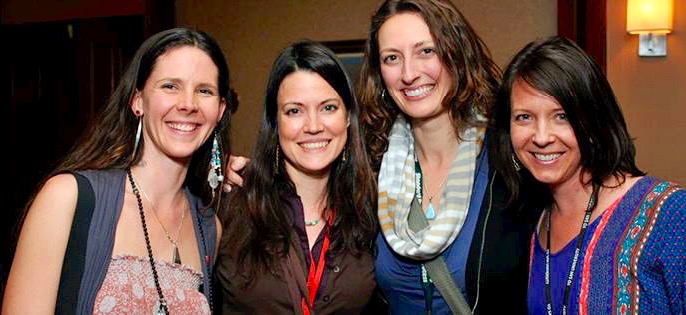
I'm both anxious and excited. It's like going back to summer camp—I'm not sure if my friends from last year will be there, if the camp counselors will be nice, if the lunch lady will be serving mystery meat. I've been out of acupuncture school for less than a year, and while part of me is still trying to recover and adjust to working, another part of me is beginning to stir again—the student inside. It seems that in our profession, despite all different backgrounds, educations, specialties and interests, we have that in common. We love to learn!
Acupuncture and Oriental Medicine are a lifelong study. The more I learn, the more I realize how much I have yet to learn. I've had to remind myself that it will take time and I have a good solid base to build on. The beauty of this reality is that we will just keep getting better—that's the plan at least. It can be incredibly easy to find a pattern, a groove, a needle combo that does the trick. Why mess with it if it works? What I found was the Southwest Symposium in Austin, TX was more than just a way to get continuing education units, it was a way to get excited about the medicine again, to collaborate with like and different minds, to see old friends and meet face-to-face with people, who up until now, had been a tiny picture on Facebook.
So I dusted off my notebook, gathered some pens and checked my expectations at the door. I was thrilled to see familiar faces and meet people I'd only know by name and reputation. What an incredible experience to be in this space that is buzzing with the collective qi of students and practitioners. In private practice I find that we can become a bit isolated. The graduate school environment is so unique—bouncing ideas off of one another, learning from each other's successes and mistakes. Then, for many, we go into practice either alone or with people of different disciplines and the collaboration shifts, for it is mainly our own successes and failures we learn from and online social networking we lean on.
Vendors lined the exhibition hall of the Symposium – wall to wall with herbs, needles and gadgets galore. People would break off into little groups, catching up with old friends and making new connections. There was a lot of talk about the need to invest in our medicine, and come together to help protect our scope of practice, safety issues with unregulated needling practices and how to get involved. And this was all outside of the lectures!
There is something so reaffirming and supportive about hearing groups of people chatting about harmonizing the Ying and Wei over coffee and mixed nuts. Or knowing exactly what someone is saying when they say they felt that the esoteric Heart Shaoyin pattern changed their practice. Where else could you say, “I really love this herbal decoction for phlegm misting the mind, it really opens the orifices” without vacant, slightly horrified stares. We're not always on the same page, but we're at least using the same book.
The speakers of course were fantastic and covered a broad range of topics and modalities. You could really choose your area of interest—needling, herbs, qi gong, tuina or some combination. So much to choose from, esoteric, Japanese or Nei Jing style for your needling curiosity, with epigenetics, hormesis and aging, with some facial diagnosis in between. Regulating cycles, treating pregnancy and pediatric tuina if that suited your practice's focus. If phlegm gets you stuck, there was an herbal course for that. There was even a way to get those ethics CEUs covered.
So while it's very convenient to sit in front of our computers and get those needed CEUs, I'm starting a personal practice of attending the Southwest Symposium as a way to stay connected. Connected to my community, to my medicine, to my inner student.
2015 Southwest Symposium speakers (in alphabetical order):
About Lauren St. Pierre, MAcOM, L.Ac.
A graduate of AOMA Graduate School of Integrative Medicine, Lauren is in solo private practice with Earthspring Acupuncture, PLLC as well as Texas Center for Reproductive Acupuncture. She is also working with AOMA as a Graduate Teaching Assistant in both clinical and didactic courses while continuing to work with The American Cancer Society. Lauren has lived in Austin since 2006 by way of Lake Tahoe, California. She counts Austin as her home with her husband and two Boston terriers.
Topics: Austin, continuing education, southwest symposium
Posted by Christina Korpik on Fri, May 15, 2015 @ 04:18 PM
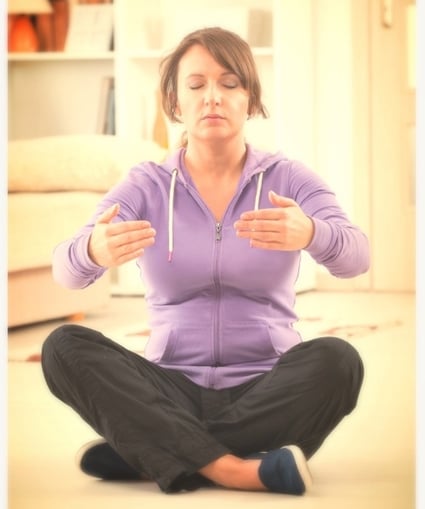
When I first started acupuncture school at AOMA, qigong was just another required class on the academic docket. It was a mysterious movement therapy and meditative spiritual practice that I had heard about but had never tried myself and wasn’t particularly excited to learn, to be honest. Sure -- I was open-minded and amped up about anything that was a part of my beloved, brand spanking new venture into a healing arts education. I can’t, however, say that I came to AOMA knowing enough about qigong to be thrilled about beginning a regular practice of it. Sure, it was reputed to be incredibly stress-relieving and relaxing...but it was also more credits to be earned in an excruciatingly long four year long program. Little did I then realize how crucial qigong would eventually become to support- my well-being in grad school, and more notably, my sanity.
As aspiring professionals in the field of the healing arts, we as students sometimes forget how the medicine we are engaging with requires us to become caretakers, to consistently be placing our time, energy and resources into helping others feel stronger, healthier, better, more joyful and balanced. This makes it extra important for us to be on top of our own self-care and ensure we are, ourselves, exceptionally healthy, strong, balanced and joyful. Because if we don’t embody these qualities, how can we model them to others?
Unfortunately, massively busy schedules and expected graduate school stressors, including hours and hours of memorizing foreign material such as tedious locations of tiny, specific acupuncture points and long lists of unpronounceable herb names certainly are not conducive to keeping us calm, stress-free and balanced. In fact, I can say in full disclosure that I have seen many a student panic under pressure and nearly run in the opposite direction from the stressors of this graduate program (myself included, ahem).
However, all breakdowns aside, the end rewards of completing the program are without a doubt, worth every ounce of personal challenge. Despite the multi-dimensional benefits of the profound personal growth that seems to be a necessary side-dish of enrollment at AOMA, it’s true that we as students need to continually be seeking outlets that ground us, help us nourish ourselves, release stress and calm our minds enough that we can continually revisit the magic of studying this medicine thoroughly despite the chaotic challenges that may surface along the journey.
One of these outlets that I accidentally stumbled upon was qigong -- and to this day it has become one of my primary anchors through this program. Initially I experienced resistance to it, I’ll admit...mostly because at the beginning of the program, I was so exhausted from the intense mental workouts that left me feeling like I would rather skip this “mandatory” class and just sleep more. The self-sabotaging aspects of laziness and burnout crept up on me more than once, but then something happened one day in my qigong class: I relaxed into what I was doing, pushed past the resistance and allowed for moving of the energy in my body in ways which felt incredibly healing and not the least bit tiring. I left the class feeling massively energized and WAY loosened up. Liver qi stagnation, be gone! I had renewed vigor and excitement for being in my academic classes and learning (aka, memorizing away until my brain exploded), my body felt stronger and healthier, and I felt noticeably more FULL: full of vibrant life force energy and more capable of caring for my clients from that place instead of from the droopy place of total burnout.
So that’s what truly sold me -- it wasn’t the proclaimed or advertised benefits of the practice, it was the undeniable personal experience with this ancient art that led to me being able to maximize and master my own energy in a myriad of ways, subsequently allowing me to be a better, more grounded, embodied (and mentally stable!) practitioner for my patients (and, simply put, a better person in general). Qigong helps me calm my nerves and emotions, it helps break apart any stagnation that accumulates from hours of sitting in cold classrooms, it allows me to tap into the qi from nature and the Universe in powerful ways which feed me and refill the places that get drained consistently from being a student and a busy, active woman with many a ball to juggle. It helps me come back into and connect to MYSELF: and this is a crucial task for anyone that is holding space for others on a daily basis, or learning to step into that role in their lives.
Not convinced or feeling the magic yet? Maybe you just need to find the right qigong form that is a good match for YOUR body and your needs, and there are so many of them that you won’t find a shortage of options to choose from. We learn a limited selection here at AOMA, but I have gone on to find some incredibly potent forms outside of what we are taught in the dojo that have become absolute necessities in my daily self-care regimens. And sure -- there are still some days where I am too tired to do much of anything, and that’s okay too. However, when I push past the hesitation and the excuses my mind feeds me and spend even 10 to 15 minutes in moving meditation, I absolutely never regret doing so.
One helpful resource to check out is the Qigong Institute:
Here is the list of AOMA’s qigong community classes in Austin,TX, for students interested in juicing up their practices outside of class requirements: https://aoma.edu/continuing-education/community-classes/qigong-classes/
To learn more about our Master's program here at AOMA, download the overview below:
Topics: qigong, acupuncture students

Some people think of acupuncture and Oriental medicine as alternative healthcare, shying away from Western medicine. While it is true that in the modern world of Traditional Chinese Medicine a holistic approach to care is at the heart of our practice, we like to think of our approach at AOMA as integrative healthcare. When we feel the radial pulse we are differentiating between choppy, slippery and dai mai, to name a few, but we are also looking for red flags like tachycardia and hypertension so we also take blood pressure.
Integrative healthcare as defined by the National Center for Complementary and Alternative Medicine at the National Institutes of Health, "combines mainstream medical therapies and CAM therapies for which there is some high-quality scientific evidence of safety and effectiveness." So we get the best of both worlds while providing the best possible care for our patients. We take into account the whole person's mind, body and spirit.
Providing care that's within our scope and utilizing the other medical fields as would best serve the patient needs: pretty straightforward. In using an integrative approach, we are not limited by one therapy because we access both alternative approaches as well as conventional ones. A good example is using acupuncture to help with post surgical pain and inflammation. Acupuncture alone wouldn't be sufficient treatment for a structural issue, like a broken bone or severely torn muscle. But after the x-rays have been taken, the bone set back into place, the use of acupuncture can be instrumental not only to reduce physical pain but also the care for the emotional component of the injury.
The Osher Center for Integrative Medicine at the University of California, San Francisco describes that "integrative medicine seeks to incorporate treatment options from conventional and alternative approaches, taking into account not only physical symptoms, but also psychological, social and spiritual aspects of health and illness."
As acupuncturists, we might ask why it matters to be integrative. Well, it may mean jobs for one. According to the American Hospital Association, the percentage of U.S. hospitals that offer complementary therapies has increased dramatically in less than a decade, from 8.6% in 1998 to almost 42% in 2011. That's good news for practitioners but it's great news for patients.
Part of being a good integrative healthcare practitioner is understanding the health landscape for that patient and being able to speak intelligently about it with other practitioners that may have a background different than our own. Qi, yin and yang are incredibly important to us but if we're working on a case and the patient primary wants to understand what you are treating and herbs you intend to prescribe, we need to be able to have that conversation. Not to say you can't use terms like zang fu and xue xu, just back it up.
AOMA is hosting our own integrative healthcare symposium with the Southwest Symposium, May 5-9, in Austin, TX. One of the best ways to understand TCM and how to speak about it with patients and other healthcare providers is to get many different points of view. Be sure to check out this year’s line-up! aoma.edu/sws
Topics: acupuncture school, integrative medicine, acupuncture clinics
Posted by Jessica Johnson on Fri, May 08, 2015 @ 03:26 PM
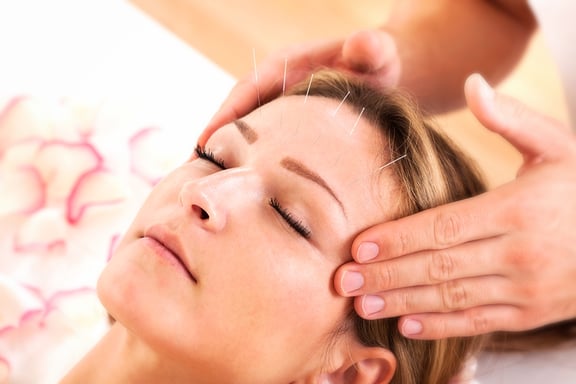
When I first came to AOMA in Austin to attend acupuncture school, I was thrilled. Yet, I have always been anxious about this day - I am about to go into my first clinic as a treating acupuncture intern. I am writing this only a few hours before I go into clinic. I am nervous, excited, and slightly nauseous. I've finally arrived at the day that I will meet a complete stranger and put acupuncture needles in them! This is what all oriental medicine students have been waiting for!
My only hope is that I can help someone. It is all a little nerve-wracking to have patients' care in my hands for the first time. Everyone in my cohort has been praying this week to only get patients with local qi and blood stagnation because it is supposed to be the easiest to treat. Please, please don't let me get a chief complaint of cataracts or really anything to do with someone's eyes. I don't know if I am ready treat such a sensitive area, although, I guess when the time comes I will have to be ready. It’s a good thing there are supervisors and residents there to assist me.
For those of you who are observing in clinic right now you might notice that some of your interns are doing their best but are very anxious. And you know what? That is perfectly alright. It is okay if you have to double check your school materials. I am going to have to do that plenty myself. Chinese medicine is complicated after all. Let's not forget that acupuncture is an art form; there is no one right way. If you don't happen to remember where a point is located or what energetics it has, don't fret too much. As acupuncture students, we are supposed to be learning right now. Mistakes will happen, but don't think it's the end of the world. The great part is, even if you don't do everything right, you are still making a huge difference in the lives of your patients. At least that's what I am telling myself right now. Wish me luck!
Topics: acupuncture school, acupuncture students
Subscribe below to receive instant, weekly, or monthly blog updates directly to your email inbox.

AOMA Graduate School of Integrative Medicine
4701 West Gate Blvd., Austin, TX 78745
800.824.9987 | 512.454.1188 | 512.454.7001 fax
info@aoma.edu
©1998-2020 AOMA Academy, LP - All Rights Reserved | Privacy Policy